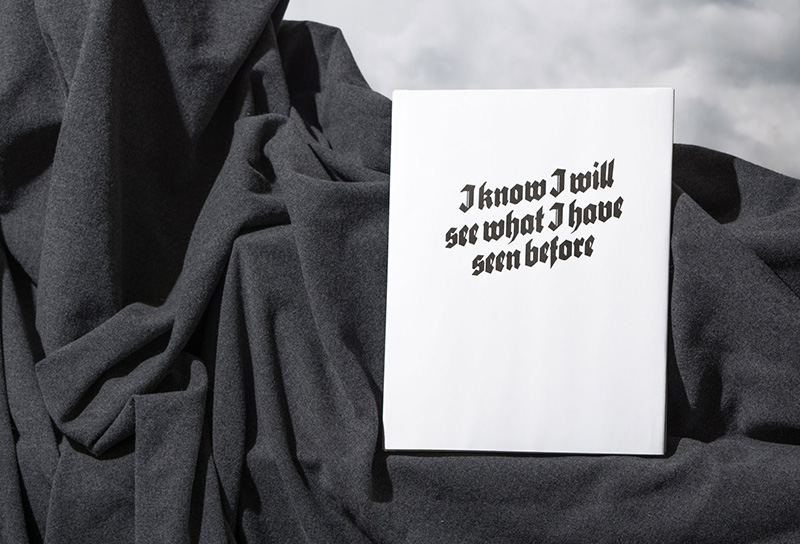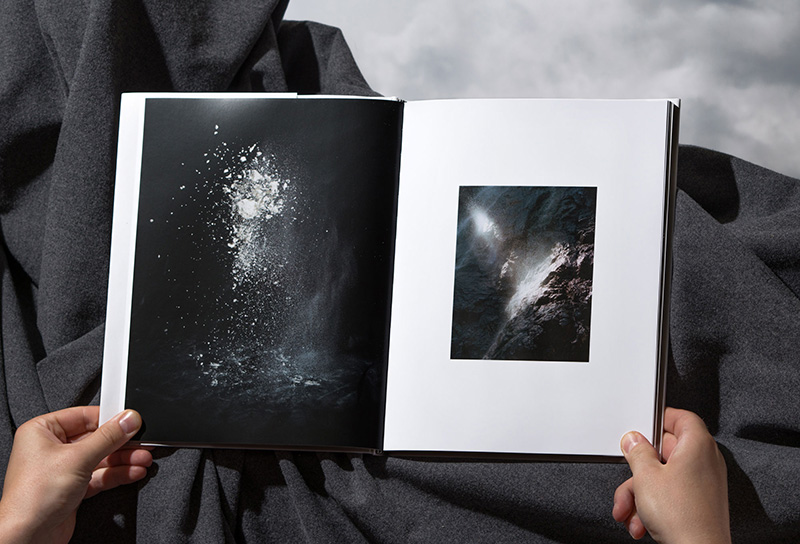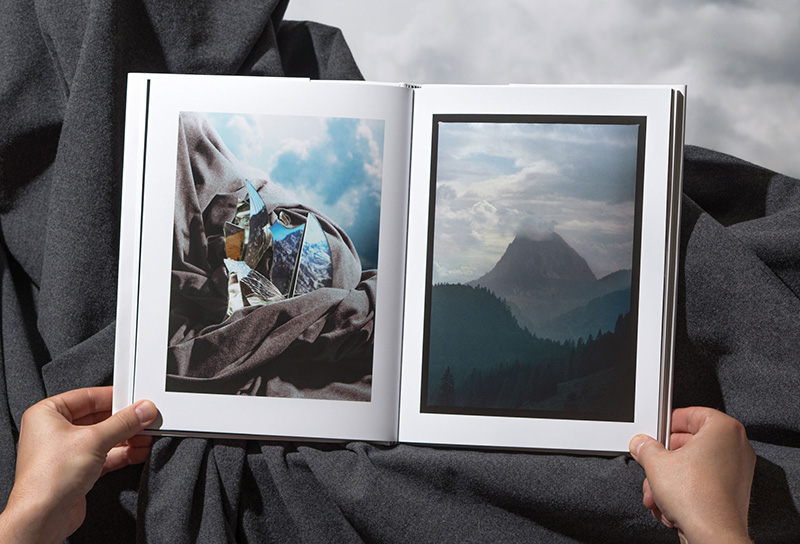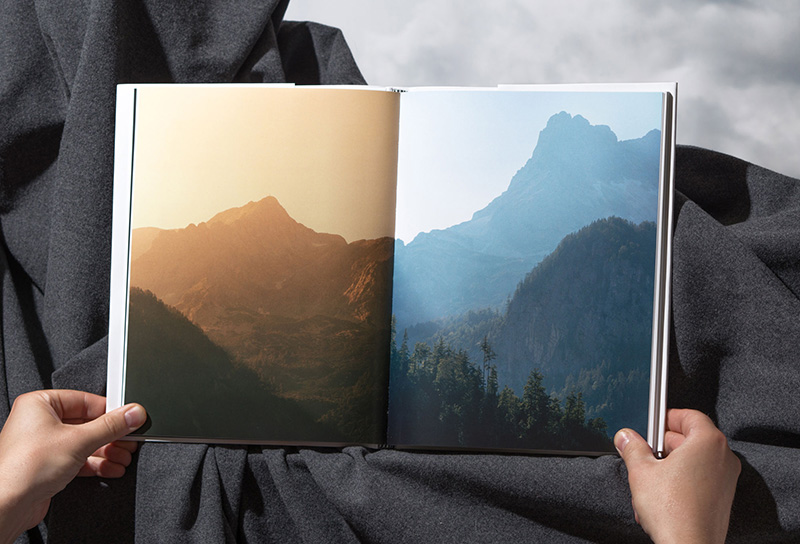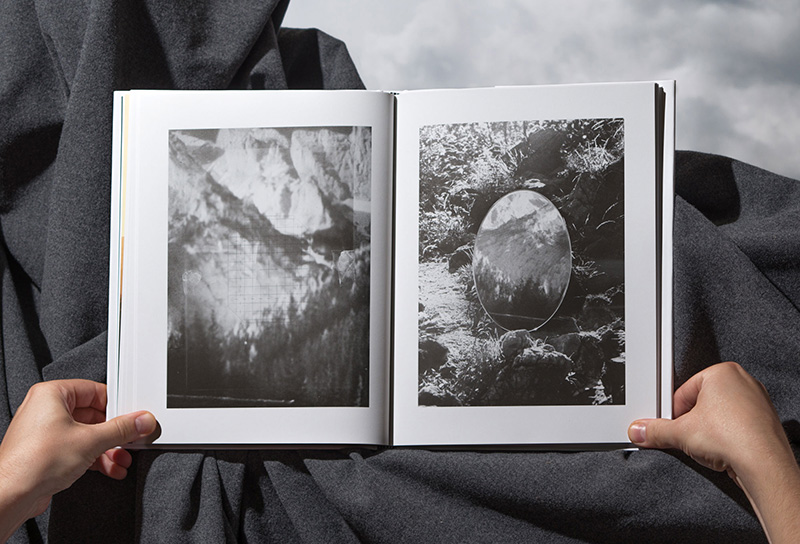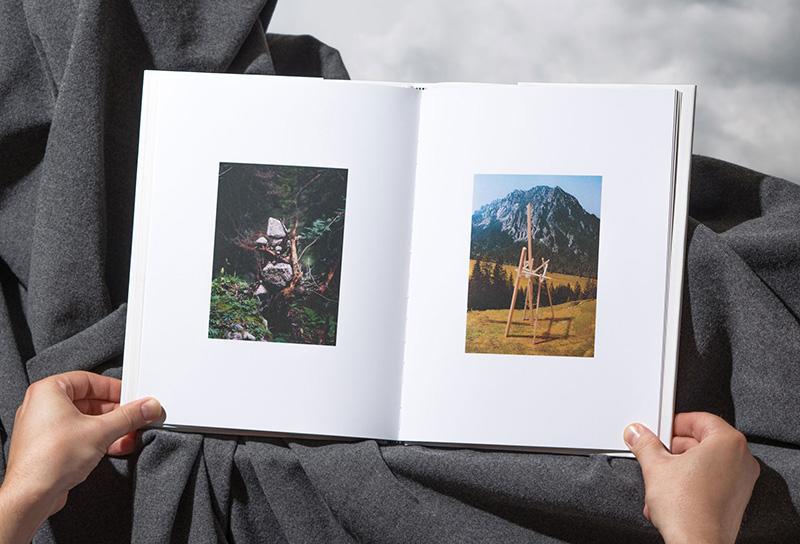Thomas Albdorf – I Know I Will See What I Have Seen Before
Book spreads courtesy of the artist
I KNOW I WILL SEE WHAT I HAVE SEEN BEFORE by Thomas Albdorf (Lodret Vandret, 2015), BUY
The familiar assumption about contemporary practice in photography has been that the advent of digital technology instigated a crisis in how we think about the medium and this in turn has prompted a renewed interest in the qualities, especially material qualities that are specific to photography itself. The crisis has been, in short, one of identity. The answers provided by this work haven’t always been convincing, not least because the question of what photography is seems far less urgent now than the question of what it does, or rather, of what we do with it. In his recent – and first – book, Thomas Albdorf is working very much with the latter of these different approaches to ‘questioning’ photography, in a way that both extends the sculptural direction of his work so far and also manages to move our understanding of photography into the realm of its use. The book, I Know I Will See What I Have Seen Before, is very much a self-enclosed work, but also strongly resonates with contemporary concerns. It does not, however, repeat often formulaic notions of photography’s materiality that are just another re-hash of the late modern obsession with medium specificity. Instead, Albdorf concentrates on exposing the visual codes that facilitate how pictures are used.
In order to do this he takes a particular subject and employs it as a kind of case study. Although the term ‘deconstruction’ has a specific philosophical sense that doesn’t really apply here, in its more common definition of ‘taking apart’ we can indeed see that this work is a sort of de-construction, reverse engineering a genre of image-making to see what its constituent elements are and how they work together to produce a particular effect. In that sense then that he is not simply photographing mountains for their own sake – though there is a definite sense that he does actually like them as a subject; at the same time, he is also employing a known vocabulary to show how an idea and a way of seeing are disseminated by being pictured. The structure of the book and its title demonstrate this idea of repetition. We are seeing what we have seen before, but this time with the action of the pictures fore-grounded, not so much for what that tells us about photography itself, but for what it suggests about our seeing – and understanding – of the world around us. After all, if we only see what we expect to see (that is, to see what we’ve seen before) then any truly new knowledge of the world requires a fundamental break in those habits of seeing.
In truth, Albdorf’s work is not such a ‘break’ in itself and isn’t presented that way. Instead he uses the structure of the book to reflect on the how a particular set of pictorial conditions lead to a given understanding of what is being seen. At work is a sort of musical strategy, presenting a theme followed by some variation, which is signalled by the use of different paper-stocks in each section so that there is a tactile clue as we move from the Prelude and the main section to the interlude printed on a thin, newsprint type stock. This section repeats the first two, with a few new additions and functions as a ‘bootleg’ copy of the main work. The book finishes with a Coda that is thematically similar to the main section of the book, but visually (that is, stylistically) distinct. The attention to detail here in the paper-stock and the whole production of the book is very pleasing. It’s typical of Lodret Vandret’s work and never seems like the arbitrary imposition of design elements on the work where it isn’t warranted. Another good example of this is the ostentatious ‘Gothic’ script on the cover, surely a nod to the Romantic fascination with wild mountain landscapes and how that fascination has permeated the culture, a diffused copy cut off from its original source, but still oddly resonant as a part of a shared vocabulary.
Relatively naturalistic pictures – or just pictures with no obvious intervention, really – sit side by side with pictures whose subjects have been constructed to be photographed, in the recently much hyped still-life genre. Here they are genre exercises too; the difference being that in this case they relate specifically to the realistic pictures that surround them, so that, for example, the sun-lit spray from some rocks under a waterfall is paraphrased in the studio with a handful of white dust thrown against a dark backdrop. The point being that even when photographs simply appear to show to what is there, they are in fact working from an implicit conceptual template or a set of ideas that already circumscribes what can be shown and seen photographically. Of course, in a way Albdorf pre-empts his argument by working from what is a highly conventional type of image-making; the clichés are there for the taking. But most photographs can be understood – and work – in a similar manner, so the proximity of the de-constructed photographs to the other pictures encourages a reconsideration of how these seemingly realistic pictures function. The reproducibility of images arises not just from what is being photographed, but also the ideas we have about that subject and yet in Albdorf’s vision of this process the resulting loop is actually productive, rather than just being a nihilistic succession of copies.
The problem of reproduction is suggested in other ways too, where sections of a photograph have been enlarged to show both the half-tone dots that make up the printed page and the pixel blocks of digital storage. The implications of this transition from analogue to digital forms of materiality run throughout the book. Stacks of red and white scale markers have been haphazardly inserted into landscapes where they don’t and can’t function as measures. In a digital world their assumed relationship to the landscape has been broken because the conceptual structure that underpinned the forms of knowledge they once embodied have largely been eroded, so they’re left as an echo, a copy of something, just as the pictures themselves are an echo of something that no longer entirely corresponds to our experiences. I Know I Will See What I Have Seen Before is a layered body of work that rewards a patient unfolding of its themes. It continues many of the concerns that have motivated Albdorf’s work so far, while also moving them decisively forward. Many of the pictures have an unexpected, at times uncanny, visual beauty, which is perhaps a legacy of Romanticism mutated through the pictorial vocabulary of mountaineering brochures and National Geographic. It’s precisely this kind of post-digital hybrid that Albdorf makes such intelligent use of here.

